Gyoza is a dish in Japan that consists of small dumplings filled with vegetables and moist ground pork. These delicious dumplings are often served with rice and salad. They are also a great addition to a Japanese meal. Here are some tips on cooking gyoza.
Gyoza Recipes
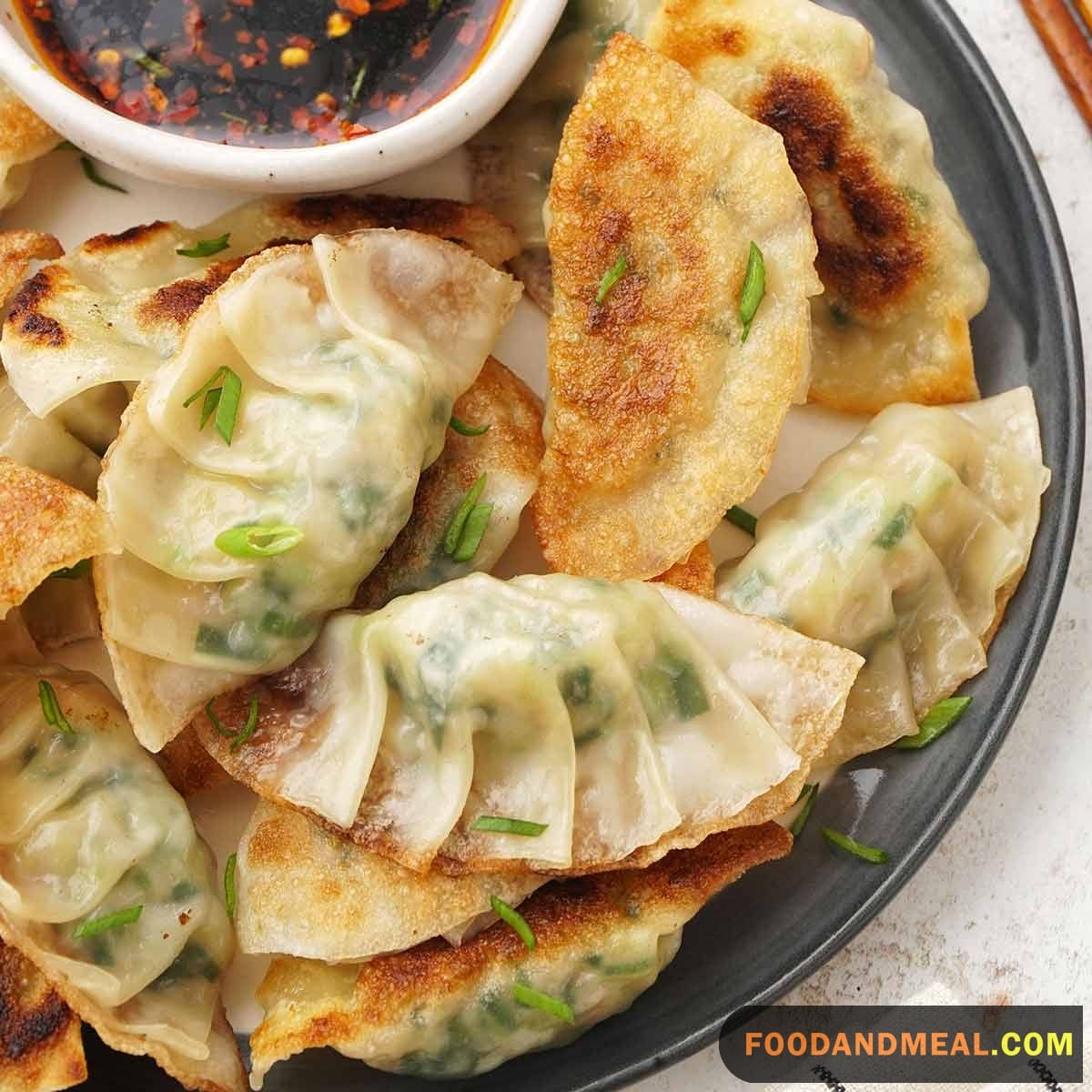
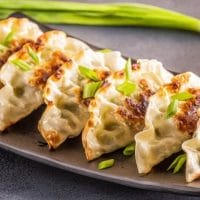
Gyoza
Equipment
Ingredients
- 1 10-ounce package wonton wrappers
- 1 tablespoon vegetable oil
- ¼ cup water
Instructions
- In a large skillet, heat the sesame oil over medium-high heat.
- In the sesame oil, saute the cabbage, onion, garlic, and carrot until the cabbage is tender and translucent.
- Add the pork and egg, stirring constantly. Cook until the pork is browned. Remove from the heat and let it cool slightly.
- To make the dumplings, place about a tablespoon of filling on the center of each wrapper and fold it in half to enclose the filling. Moisten the inner edges and pinch to seal.
- In a large skillet, preheat the vegetable oil over medium-high heat.
- Fry the gyoza until lightly browned (about 1 minute per side).
- Add the water and cover the skillet. Let the dumplings steam until almost all the liquid has evaporated.
- Serve with soy dipping sauce or spicy soy dipping sauce.
Video
Notes
Nutrition
© Food And Meal
This website provides approximate nutrition information for convenience and as a courtesy only. Nutrition data is gathered primarily from the Spoonacular Database, whenever available, or otherwise other online calculators.
Alternative Method: Steamed Gyoza
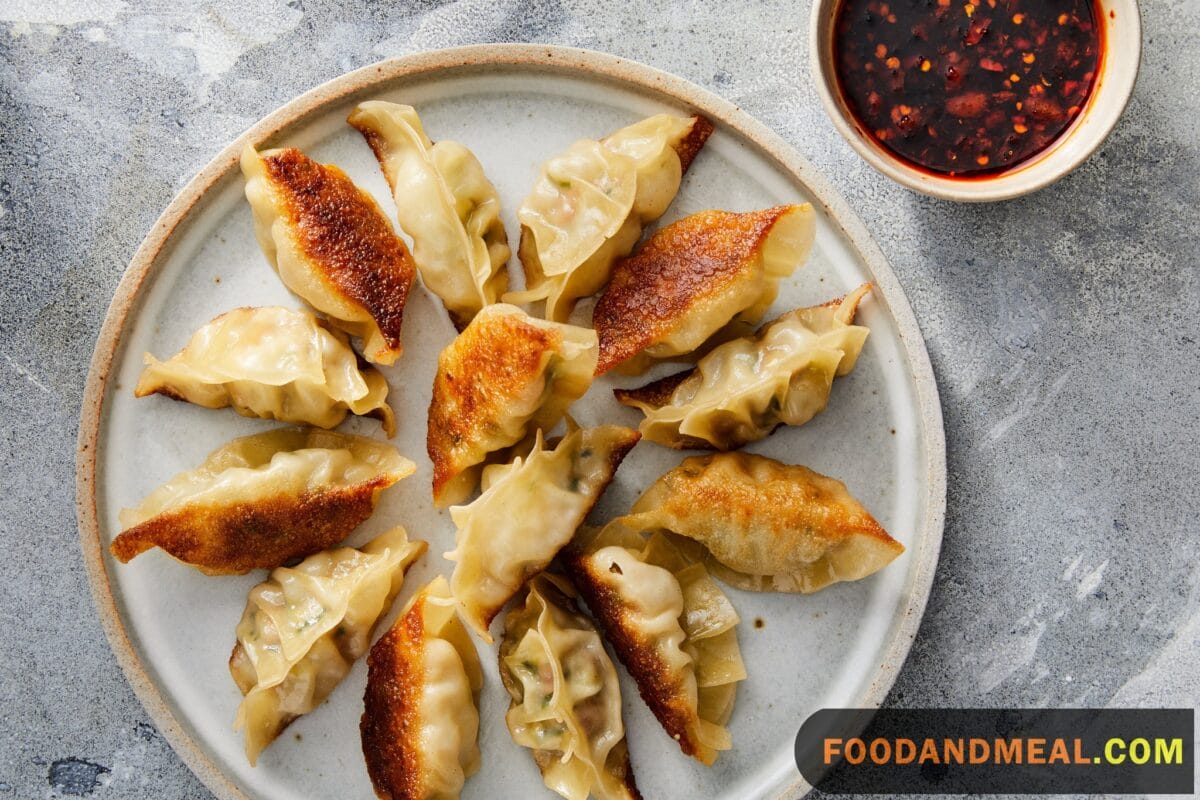
Ingredients:
- Gyoza wrappers
- Filling (pork or vegetarian)
- Water
- Soy sauce for dipping
Instructions:
- Prepare Your Steamer: Start by setting up your steamer. If you’re using a bamboo steamer, line the bottom with cabbage leaves or parchment paper to prevent sticking. Ensure there’s enough water in the bottom part of the steamer without touching the top rack.
- Assemble Gyoza: Place your Gyoza on the top rack of the steamer, making sure they don’t touch. Leave a bit of space between them to prevent sticking. You can use a bamboo steamer tray, metal steamer, or any steaming apparatus you have.
- Steam Gyoza: Cover your steamer with a lid and bring the water to a boil. Once it’s boiling, reduce the heat to medium and let the Gyoza steam for about 6-8 minutes. Check one dumpling to ensure they’re fully cooked and the wrapper is translucent.
- Serve: Carefully remove the Gyoza from the steamer. They will be piping hot, so handle with care. Serve them immediately with your favorite dipping sauce, traditionally soy sauce with a splash of rice vinegar and chili oil.
Tips for making Gyoza
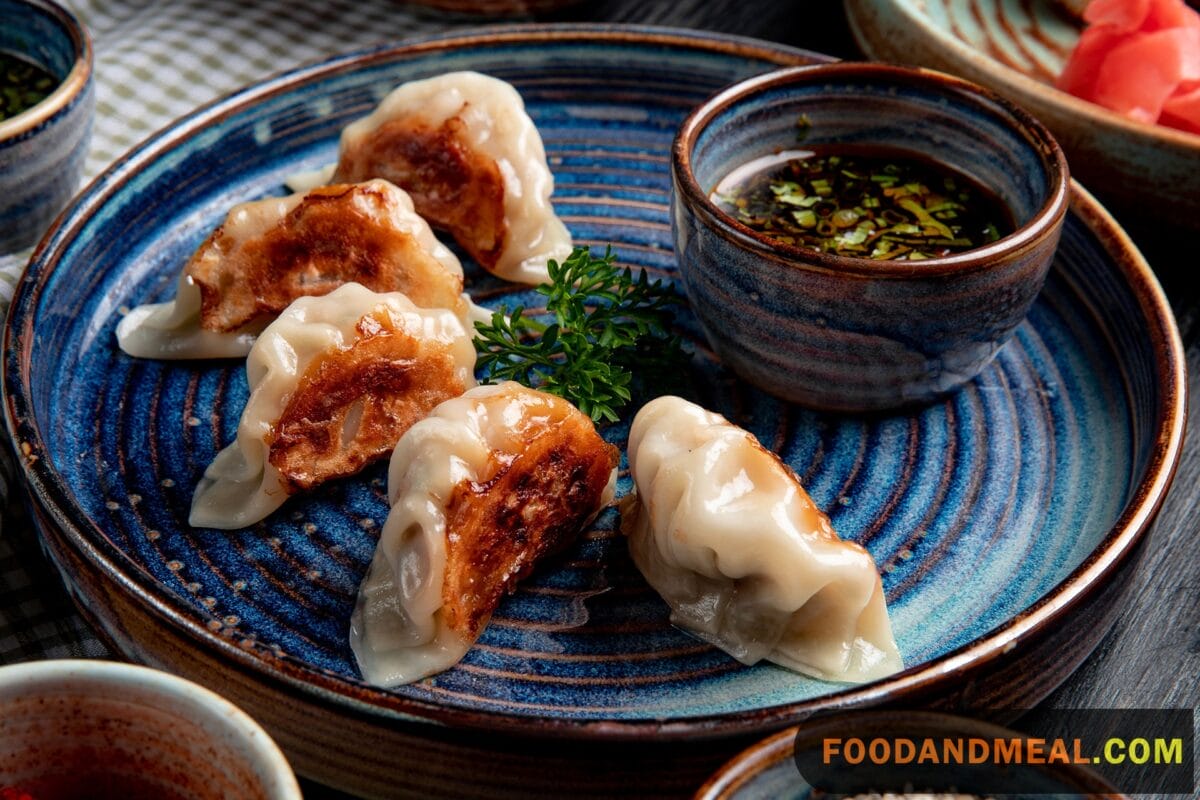
Cooking Tips
- Balancing the Filling: When preparing the filling, make sure it’s well-balanced. It should have a good mix of flavors and textures, combining meat or vegetables with seasonings, aromatics, and binders like soy sauce, sesame oil, ginger, garlic, and green onions. Taste and adjust before filling the wrappers.
- Proper Folding: One common mistake is not sealing the Gyoza properly. To ensure they don’t open while cooking, brush a little water along the edge of the wrapper before folding. Press and crimp the edges firmly to create a good seal.
- Using a Non-Stick Pan: When pan-frying Gyoza, use a non-stick pan for the best results. This prevents sticking and ensures a crispy, golden-brown bottom.
- Don’t Overcrowd the Pan: When pan-frying, avoid overcrowding the pan. Leave some space between Gyoza to allow for even cooking and crispiness. You can cook them in batches.
Serving Suggestions
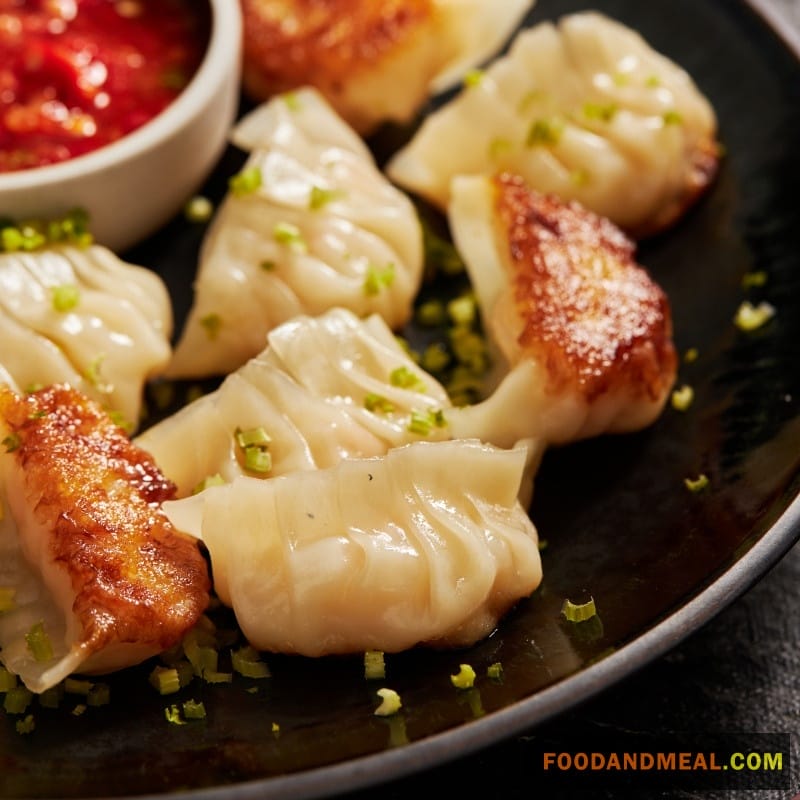
- Dipping Sauce: Gyoza pairs wonderfully with a dipping sauce made from soy sauce, rice vinegar, and chili oil. Adjust the ratio to your preferred level of heat and tanginess.
- Side Dish: Serve your Gyoza with a simple side of steamed jasmine rice and a side salad with a light vinaigrette dressing for a balanced meal.
- Garnishes: Garnish your Gyoza with a sprinkle of toasted sesame seeds, thinly sliced green onions, or chopped cilantro to add color and freshness.
- Soup: Gyoza also work great in a clear, flavorful broth. Make a simple chicken or vegetable broth, add some sliced vegetables and a dash of soy sauce, and simmer until the Gyoza are cooked through. A warm and comforting soup option.
FAQs (Frequently Asked Questions) about Gyoza
- Can I Freeze Uncooked Gyoza? Yes, uncooked Gyoza freeze beautifully. Lay them on a baking sheet to freeze individually, then transfer to an airtight container or zip-top bags. When ready to cook, no need to thaw; just add a few extra minutes to the cooking time.
- How Do I Store Leftover Gyoza? Store leftover cooked Gyoza in an airtight container in the refrigerator for up to 3 days. To reheat, steam or pan-fry them again until they’re heated through.
- What’s the Difference Between Gyoza and Potstickers? The terms are often used interchangeably. Gyoza is the Japanese term, while potstickers are a Chinese version. Both are similar but may have slight variations in wrappers and fillings.
- Can I Use Store-Bought Wrappers? Absolutely. Many stores offer pre-made Gyoza wrappers. They save time and work perfectly fine. Just ensure they’re not too dry; keep them covered with a damp cloth while working.
- Can I Make Vegetarian Gyoza? Yes, you can make delicious vegetarian Gyoza. Simply replace the meat with a mixture of finely chopped and seasoned mushrooms, tofu, or other plant-based protein.
Elevate your dining experience with our Gyoza recipe – the perfect blend of flavor and technique. Create crispy perfection today. Join us!
I'm James F Anderson, a noted sous chef from London and a Le Cordon Bleu alumnus. My career began in a Michelin-starred Parisian eatery, where my blend of classic and contemporary cooking, using seasonal ingredients, earned accolades. Recognized in culinary publications and on cooking shows, I’m committed to mentoring aspiring chefs and delivering memorable dining experiences, marking me as a standout talent in the culinary world.

